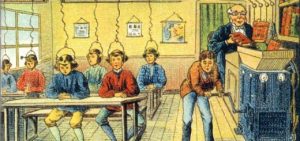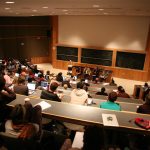To Freire, the Banking Method is a structure in classrooms in which knowledge is “deposited” (72) into the students, which Freire describes as “serving to dehumanize” (75). Rather than being a mutual space where everyone learns from and teaches each other, this structure is designed to have one main teacher (the authoritative figure) while the students remain there passively.
This model is critiqued by Freire for being a form of oppression as it empowers the teacher to be the “depositor” (72) leaving the students powerless, at the expense of both the teachers and the students (more so the students, however) as everyone can always benefit from learning something.
The Banking method is contradictory to the entire idea of teaching being a mutual process between teachers and students; so if the entire focus of learning is for the sake of education, as it’s supposed to be “an instrument for liberation”, the Banking method does just the opposite- as it subconsciously establishes an existing oppressed space in classrooms.
I went to a Charter School for middle and high school, and although the immediate norm in schools globally follows the Banking method, my schools were more strict in following it. We had to sit there robotically- couldn’t get up to use the bathroom, throw garbage out, nor get tissue without raising our hand as asking the teacher first, and that’s if the teacher said yes- and pay attention. No speaking or disrupting or else it would be a demerit. However, something I was very appreciative of that my schools did, is that they were very big and open to asking questions and letting students lead discussions via seminars(in some classes). In Hindsight, I can vouch that the Banking Method’s benefits included: practicing more focus in classrooms and learning, along with more order of the learning material; however, the idea of the teacher being the only “depositor” is harmful. Therefore, students should have more of an active role in their classes not only so they can retain more but ACTUALLY learn and hopefully enjoy it. Also, the presence of teachers may be useful in case students are confused or have ‘loose ends’ that need to be ’tied up’ at the end of class, it’s all about balance for the best outcome.











